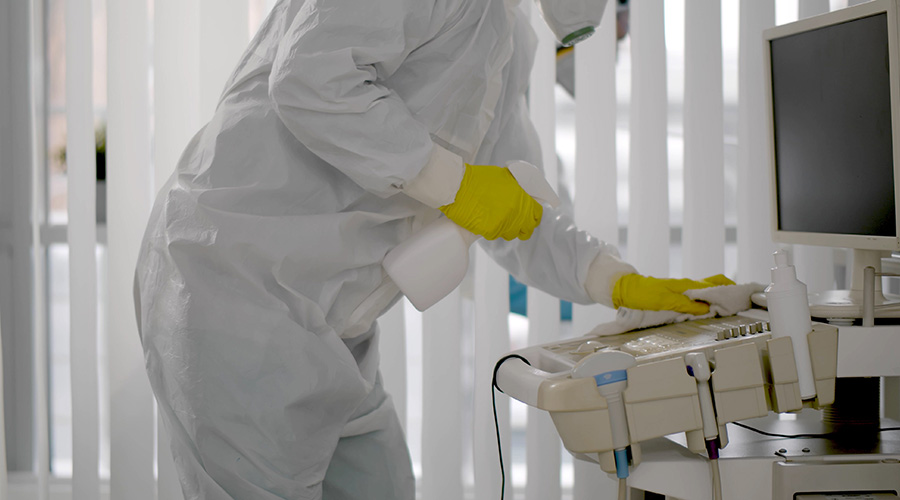|
Food Safety and Technology Research Centre of the Department of Applied Biology and Chemical Technology (ABCT), The Hong Kong Polytechnic University (PolyU) recently found that bacteria that carry the colistin resistance gene mcr-1 commonly exist in human and various types of food and environmental samples collected from Hong Kong and the Chinese mainland. The mcr-1 gene is a new plasmid-encoded colistin resistance mechanism discovered by scientists in China in 2015. Colistin has been a last-resort antibiotic used to treat severe infections caused by carbapenem resistant Enterobacteriaceae (CRE) strains. The prevalence of mcr-1 in our ecosystem challenges the role of colistin as the last resort antibiotic to treat infections caused by CRE.
A novel method to isolate mcr-1–bearing bacteria and project a route of transmission
Determining the origin of mcr-1 is important in assessing the degree of mcr-1 contamination, which can potentially impact the clinical use of colistin. However, there is lack of methods for specific isolation of mcr-1-positive bacteria, since many species of bacteria are intrinsically resistant to colistin, interfering with the isolation of mcr-1-positive organisms. Prof. Chen Sheng of ABCT has recently developed a sensitive and specific method for isolation of mcr-1-bearing bacteria from various sources and investigation of the prevalence of mcr-1 in various sample types.
Using this approach, Prof. Chen and his team found that mcr-1 was present in organisms recovered from human, a wide range of food and environment samples. The nature of distribution of mcr-1-bearing organisms in the test samples suggests that this resistance gene most likely originates from E. coli in the gastrointestinal (GI) tract of animals due to the prolonged usage of colistin in livestock as growth promoters. The mcr-1 gene might then be transmitted to humans through the food chain or direct contact between animals and humans, as well as through contamination of the fresh and seawater system, which in turn lead to the contamination of vegetables and seafood. The persistence of mcr-1 in the human GI tract microflora can cause further contamination of our water systems through improper disposal of wastewater containing human faeces. Pet animals which are rarely exposed to colistin exhibited a much lower level of prevalence of mcr-1-positive organisms than livestock. However, fresh water reservoir that is not contaminated by faeces was negative for mcr-1 gene.
Significance and implications of the findings
Colistin has been effective in treatment of infections caused by CRE. However, since mcr-1-bearing, colistin resistant Enterobacteriaceae strains are extremely common in the ecosystem, the chance by which CRE strains acquire this highly prevalent mobile colistin resistance gene is much higher than we originally thought. An increasing prevalence of CRE strains which are also colistin resistant would lead to an increased rate of untreatable infections, especially among immune-compromised patients.
Prevention, diagnosis and treatment
Given the prevalence of mcr-1 among Enterobacteriaceae strains in various environmental niches, increased usage of colistin to treat CRE infections may result in rapid selection of organisms that exhibit resistance to both carbapenems and colistin. Prof. Chen’s findings highlight a need to develop effective inhibitors of MCR-1 or intervention measures that disrupt the transmission of mcr-1-bearing plasmids in order to preserve the value of colistin as a last-line antibiotic to treat life-threatening bacterial infections.
The full article can be accessed via the link: http://www.eurosurveillance.org/content/10.2807/1560-7917.ES.2017.22.39.17-00206
|

 Why Identity Governance Is Becoming a Facilities Management Issue
Why Identity Governance Is Becoming a Facilities Management Issue Habitat Health Opens South Los Angeles PACE Center
Habitat Health Opens South Los Angeles PACE Center Denton County MHMR Center Suffers a Data Breach
Denton County MHMR Center Suffers a Data Breach What Every EVS Leader Needs To Know
What Every EVS Leader Needs To Know Blackbird Health Opens New Clinic in New Jersey
Blackbird Health Opens New Clinic in New Jersey